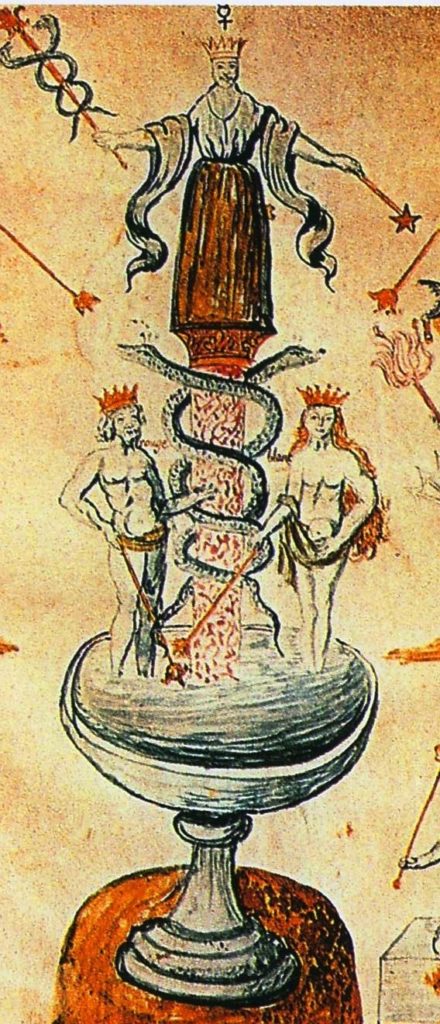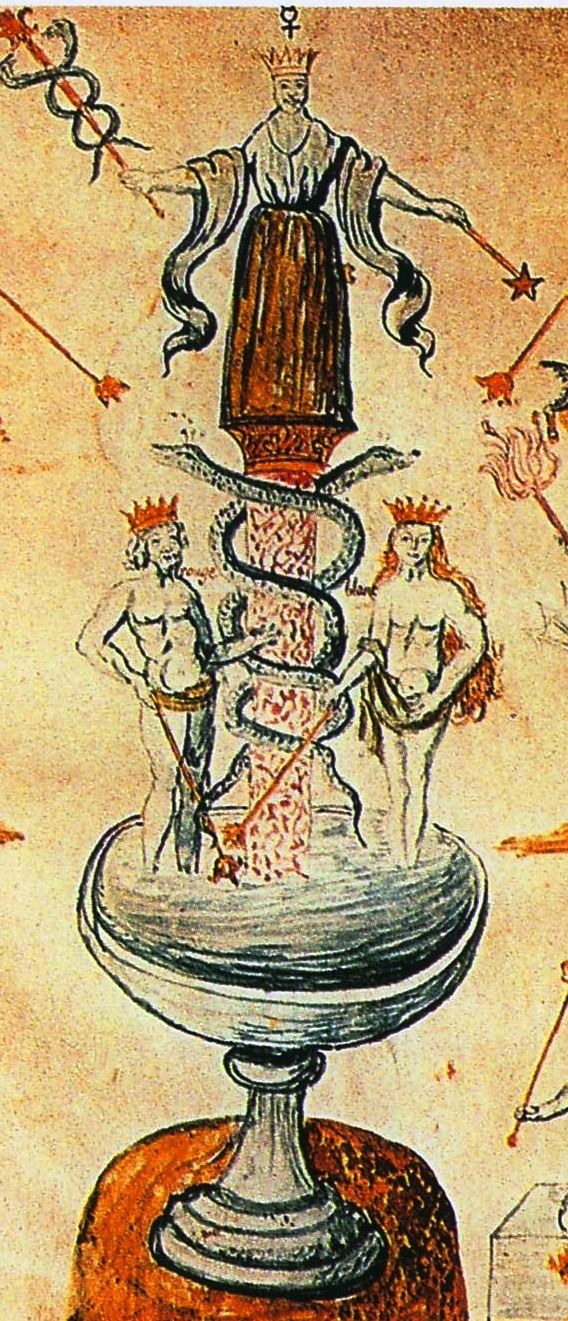The minute I heard my first love story
I started looking for you, no knowing
How blind that was
Lovers don’t finally meet somewhere
They’re in each other all along

To understand the discussion regarding gender and the sexual roles we play in our earthly bodies, we must look at from whence we came, the archetypes representing our origins. This would also entail a look at our soul evolution, reaching into other dimensions of the spiritual world. The Soul or Self has no gender, but our earthly personas are definitely wrapped around our gender roles and the projections from our unconscious of the anima and animus. The archetypes of the anima and animus are what animates our ‘gender’ nature to live in this earthly world. Jung came to this understanding as he was doing his early work, finding that gender roles were traditionally differentiated and represented the (s)elf as opposed to what he later found the ‘soul’ qualities of the (S)elf are the alchemical combination of our own inner masculine and feminine archetypes. Anima and Animus are defined as:
Anima– derived from Latin, “a current of air, wind, breath, the vital principle, life, soul”
The Anima refers to the unconscious feminine dimension of a male which can often be forgotten or repressed into the personal unconscious in daily life. This is often projected out as personality traits such as ‘vanity, moodiness, bitchiness and sensitivity to hurt feelings.’
However, in order to psychologically progress and reach greater internal balance and harmony, it is necessary for a man to recognize, embrace and connect to this unconscious feminine element of his character.
The Animus
The Animus, which is a Latin word that means “the rational soul; life; the mental powers, intelligence,“ is the unconscious masculine dimension in the female psyche. Due to societal, parental and cultural conditioning, the Animus, or masculine element within the woman, can be often inhibited, restrained and suppressed. On the other hand, some societies and cultures (such as the Western way of life), ruthlessly impose masculinity ideals as ways to excel, succeed and get anywhere in life for women. Women’s creativity and authority is often seen by those who repress the Animus as ‘feminists, authoritative, pushy, etc.
The Anima is often seen on our third dimension as being lived out by projection and the unconscious is the source of these projections. A man often is looking for his feminine to complete him, however the feminine is only seen in the projection. When a man is seized by his unconscious longing, he usually falls into moods and disassociation. This is normal in the third dimension. As we individuate and become more aware, we start seeing these scenarios lived out and can cope with what they are showing us. The same is true of the Animus as lived out by the female projections, looking for the other (inner masculine) to complete herself. When she is consumed by this longing and not aware, she becomes seized by the need to overdo this projection in the form of feminism, mood disorders and over achieving. There are many other traits that tell us as therapists how much is being repressed or suppressed, because we are watching the behavioral results of the projections.
Our external realities are centered around ‘gender roles’, however, our inner realities are, eventually containing a balance and alchemical blend of our own masculine and feminine sense of being combined in our feeling of union joining the ONE. We are evolving more and more into our inner worlds and how they feed us spiritually and cosmically in our evolution. This may take repeated lifetimes of experiences in our roles as male or female, but eventually we evolve into a ‘state of Oneness’. As we do so we help evolve in the horizonal ‘earth’ world and the ‘vertical’ cosmic world from which we originated. We have genetic memories of being in ‘union with the ONE.’ We long to go back to that state, but in our horizontal third dimension plane, we seek relationship to fulfill this mission of ‘union.’ We live in duality and in the paradox that is presented in the third dimension.
We need to look at what these differences are: gender roles of male and female vs. masculine and feminine elements. Then we must discern the level of external realities we ‘project’ and the inner realities we bring into consciousness. How is this done? How do we individuate, becoming more aware of our personal processes? How do we balance and connect the roles in our outer world with the level of consciousness in the world of the masculine and feminine within? How is all of this connected to our esoteric and theosophical studies?
This is a difficult topic to discuss unless one follows the ‘spiritual path’ and sees the ‘inner world’ as a translation of how to maneuver on ‘planet earth’ and understand the roles one must play as man or woman, not to mention the intentions behind those roles of sexual preference and procreation. We can only understand this in the external world, in horizontal time, but when we look at our inner world and the ‘voice of silence’ in our inner world, we look at the blend of our own masculine and feminine duality. We are constantly working with our own paradox and duality active and receptive qualities, however we also tend to project those out from our personal unconscious as our animus and anima projections.
Looking at the Jungian approach to ‘gender’ has been a constant struggle in understanding for those of us trained in Jung’s Psychology. Finding ways of helping others understand their gender roles from inside out is a long arduous process unless we can learn the differences between the inner worlds and outer worlds, contemplation versus projection.
We often see females in our society discovering their own masculine qualities in their psyches. We also see males discovering their feminine qualities. We no longer have to be trapped by the ‘gender roles’ of male and female, but can develop a further understanding and balance if we look at the unconscious and bringing those masculine feminine qualities to the forefront, as we shift more of our thinking to ‘androgyny.’ Inner work, understanding our dreams and meditations are ways to work with the unconscious. The unconscious lives in ‘vertical time or all time.’ This is easier to understand if one has spiritual disciplines of meditation and inner work, ‘know thyself,’ less for those who continue to see their external world in projection of those inner qualities, rather than ‘owning them as self (ego) or Self (higher spiritual communication.’ The advancement from ‘self’ to ‘Self’ is the owning of the masculine and feminine within.
Withdrawing our projections onto others, we are forced to look at the mirrored aspects at an inner level. By recognizing the inner image of the male in a woman and the inner image of female in a man, we no longer get trapped in these projections and can finally learn to accept each gender as they are and expands our own possibilities to ‘individuate’ and become independent of expecting others to fulfill our needs at those levels.
Working with projections and images in dreams and fantasies, not to leave out meditation and contemplation, we become more actualized and responsible, integrating our own uniqueness and living out our own individual purpose, without the need to be fulfilled and augmented by the opposite sex. That does not mean we do not partner with each other, but we are partnering from an individualized state of being rather than one of longing and need. Keeping journals regarding our dreams, we can see how we play out these roles and conditions in our dreams, as we become ‘all parts of our dreams.’
